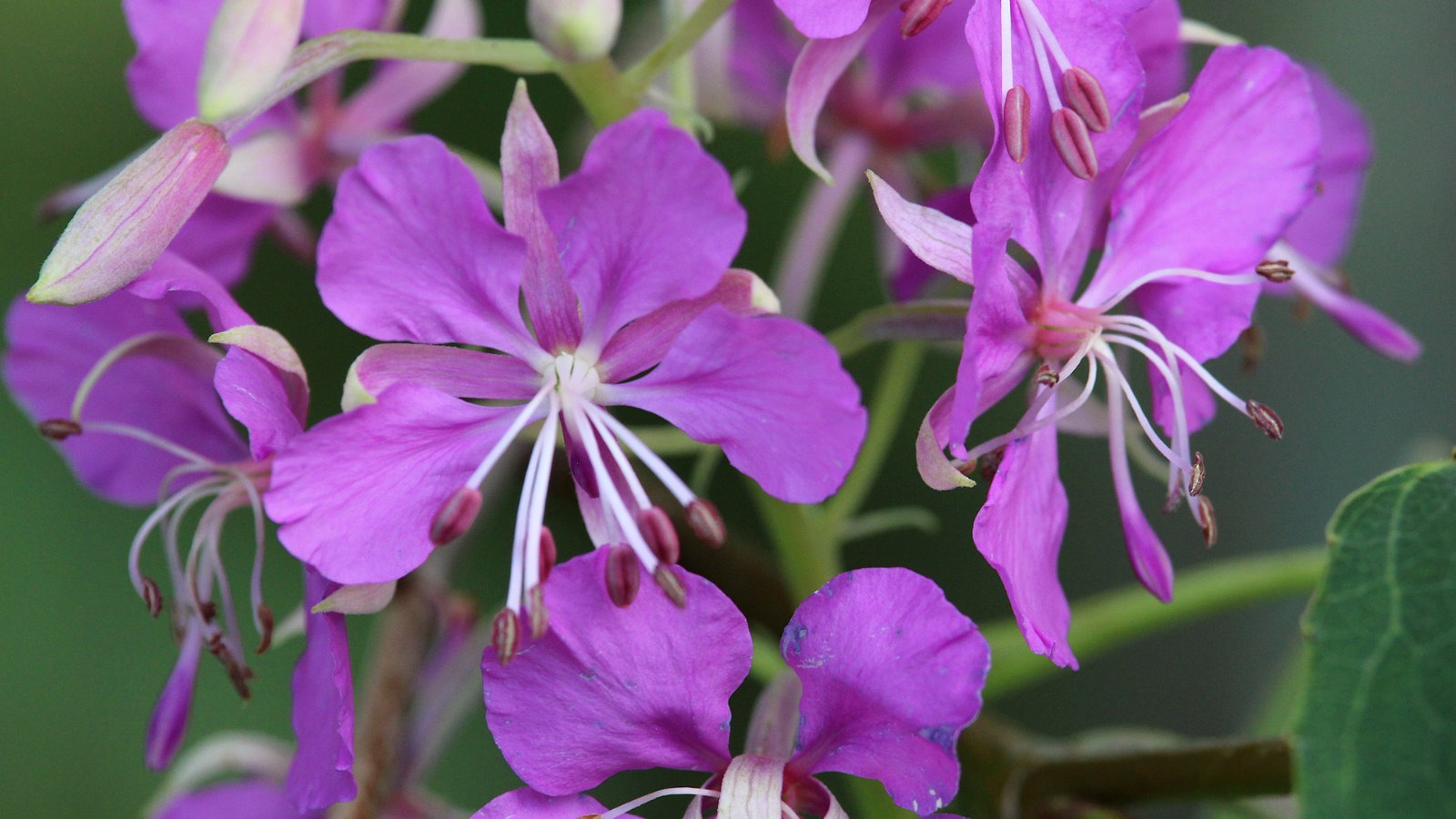This striking plant can be easily recognised, whilst travelling through our countryside in summer. It was once very uncommon in the wild but being an aggressive coloniser, it now occurs in most wild habitats. Even travelling on a train, to work, you can usually pick out this stately plant, growing in clumps, along the track margins. After the flowering season has past, it produces white, fluffy seed capsules, which can be seen floating in the air or tangled in nearby vegetation.
Latin name: Chamerion angustifolium
Identification
- Plant height: Can grow up to 4ft tall
- Leaves: This perennial produces long, narrow and pointed leaves with a unique vein structure. The leafs veins, instead of ending at the edge of the leaf, form a circular loop, within the leaf itself
- Flowers: Produces a tall stem which bares mauve-red, 4 petalled flowers, which can be between 2-3cms in diameter
- Habitat found: Disturbed ground, woodland edges, hedgerows and grassland areas
- Flowering time: July to September
- Attracts: Elephant hawk moth, bees
In The Garden
Not ideal for small gardens as it can take over a patch with rapid speed but ideal for chalky or acidic soils, in full light, where it can make a striking addition to the garden.
Did you know?
Rosebay Willowherb is also called ‘Fireweed’ as it can be one of the first colonisers in an area that has been affected by clearance or fire. It was always thought of as the first plant to appear, along railway embankments, after sparks from steam trains had accidentally started a fire.
